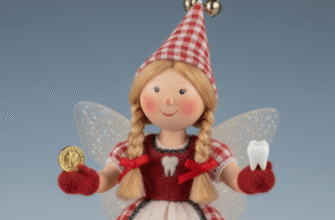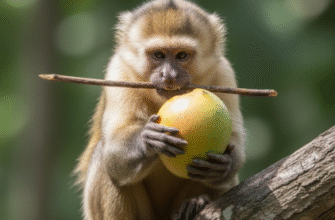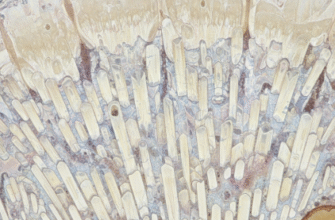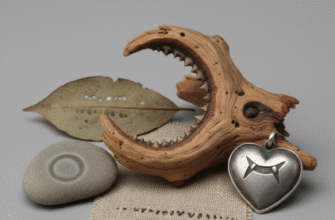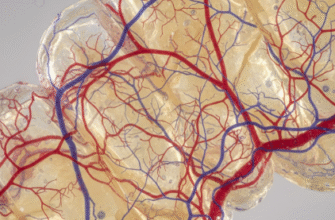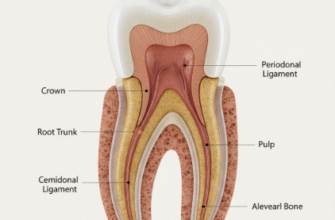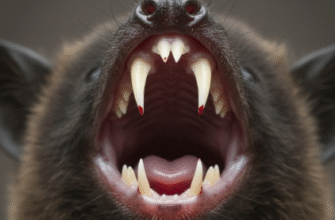Ever wondered why the tiger has such fearsome fangs, or why the beaver sports those impressive, ever-growing incisors? Long before scientific explanations, cultures across the globe spun intricate and enchanting tales to answer just such questions. The origin of animal teeth, a seemingly simple feature, became the subject of rich mythologies, reflecting a deep connection with the natural world and a desire to understand the place of every creature within it. These stories are not just whimsical fancies; they are windows into the worldview of our ancestors.
The Great Dental Distribution: Echoes from Indigenous Americas
Across the vast landscapes of the Americas, Indigenous cultures hold a treasure trove of stories explaining the world’s workings. Among these are fascinating accounts of how animals, once perhaps soft-mouthed and gumming their food, came to possess the diverse dentition we see today. Often, a powerful creator figure or a clever, sometimes mischievous, culture hero is responsible for this grand dental handout.
Consider the tales where Coyote or Raven, prominent figures in many West Coast and Plains narratives, play a pivotal role. In one imagined variation, the animals gathered, complaining about their inability to eat properly. Some struggled with tough hides, others with slippery fish. The Creator, or perhaps a designated spirit, decided it was time for a change. But how to distribute the teeth? It wasn’t always a fair or orderly process. Raven, known for his cunning and sometimes selfish ways, might have swooped in to grab the sharpest teeth for himself and his kin, leaving others with blunter options. Or perhaps Coyote, in a fit of trickery, scattered teeth haphazardly, leading to the wide array we observe – the fearsome fangs of the wolf, the grinding molars of the deer, and the needle-sharp incisors of the beaver. The chaos of such an event would neatly explain why some animals seem perfectly outfitted while others appear to have gotten a rather mixed bag.
In some traditions, the teeth themselves were objects of power or desire, perhaps kept in a special bundle or medicine bag by a guardian spirit. Animals would have to prove their worth, perform a great deed, or trick the guardian to receive their allotment. The Beaver, renowned for its industriousness, might have earned its strong, orange-enameled incisors through sheer hard work and clever engineering, demonstrating its right to gnaw down trees. The Bear, powerful and respected, might have been granted its formidable set for its strength and role as a forest guardian, a symbol of its authority. These stories often carry moral lessons, emphasizing traits like cleverness, perseverance, or the consequences of greed or impatience during the great tooth giveaway.
African Whispers: When Teeth Were Treasures
The rich oral traditions of Africa are teeming with animal fables, many of which explain their unique characteristics. While specific “how they got teeth” stories might be woven into broader creation narratives, the theme of animals acquiring their distinct features, including dental ones, is common. Often, these tales involve a celestial meeting, a clever trickster, or a magical intervention that forever changed the mouths of the animal kingdom.
One can imagine a narrative where, in the beginning, all animals were toothless, living on soft fruits and nectar. But as the world grew more diverse, so did the food. Nyame (the Sky God in Akan traditions) or another supreme being, seeing their struggles, decided to gift them teeth. But what kind? He might have laid out a vast array on a celestial plain: sharp ones for tearing meat, flat ones for grinding grasses, long ones for digging roots. Then, a great race or a contest of wits was declared! The swiftest, like the Cheetah, might have arrived first, snatching the keenest, most effective hunting teeth, their speed rewarded with efficiency. The slow and steady Tortoise, perhaps arriving late after much deliberation, might have found all the “good” teeth gone, and thus ended up with a hardened, toothless beak – which, in a twist of fate, proved perfectly suited for its own diet. This highlights a common folkloric theme: your place in the hierarchy or your effort determines your reward, or sometimes, adaptation is born from perceived lack.
Alternatively, a trickster like Anansi the Spider could be involved. Perhaps Anansi was tasked with distributing teeth but, in his typical fashion, muddled the process for his own amusement or gain. He might have promised the Hyena a beautiful set of strong, even teeth but then, through a series of comical mishaps or deliberate deceptions, gave him the bone-crushing, slightly mismatched set he has today, forever marking him with a laugh that echoes his trickster-induced fate. Stories like these not only explain physical traits but also embed cultural values and social commentary within their entertaining plots, often with a humorous but pointed moral about cunning and its consequences.
These captivating narratives, passed down through generations, are more than mere entertainment. They serve as cultural encyclopedias, explaining the natural world, animal behavior, and the interconnectedness of all living things. The specific details about teeth acquisition often reflect a deep observation of animal diets and dental structures, creatively personified through myth and legend.
The Curious Case of the Missing or Specialized Chompers
Not all stories focus on a universal distribution where every creature gets a standard set. Some tales delve into why certain animals have very peculiar dental arrangements, or seemingly none at all, transforming a perceived lack into a unique strength. Think of the Anteater with its long, toothless snout, perfectly designed for slurping up ants and termites. A story might tell of how Anteater, perhaps a shy or late-arriving creature to the great tooth-giving ceremony, found all the “standard” teeth already taken. Disheartened, it might have appealed to a compassionate creator, or through a stroke of ingenious self-adaptation spurred by necessity, was granted a specialized, sticky tongue and strong claws instead. This transformation made it a master of its own niche, proving that teeth aren’t the only tools for survival. Such stories emphasize that every creature is perfectly equipped for its role in the ecosystem, even if its “teeth” are unconventional or absent.
Birds, with their beaks, present another fascinating case for mythological explanation. Ancient tales might recall a time when birds, too, had teeth, perhaps small and sharp like their reptilian ancestors. Imagine a mythical council where birds, finding teeth cumbersome for flight or inefficient for their evolving diet of seeds, insects, and nectar, collectively decided to trade them for lightweight, versatile beaks. Or perhaps a mischievous deity, playing a prank or seeking to humble the proud birds, stole their teeth, forcing them to adapt in remarkable ways. The resulting diversity of beak shapes – the hooked tearing beak of an eagle, the delicate nectar-sipping probe of a hummingbird, the seed-cracking strength of a finch – could be attributed to this pivotal, tooth-losing event. Each bird species subsequently developed a beak tailored to its specific needs, a testament to nature’s ingenuity as interpreted by the storyteller’s art.
Then there are the herbivores, like cows and sheep, with their complex molars for grinding tough plant matter but often lacking upper incisors, instead possessing a tough dental pad. A story could explain this particular arrangement: perhaps in the great tooth giveaway, they wisely prioritized strong grinding teeth over sharp cutting ones, as their peaceful diet didn’t require tearing flesh. Or maybe they willingly traded their front teeth for an eternally peaceful disposition and a promise of abundant grass, a pact made with the spirit of the plains. These narratives beautifully illustrate how different “dental plans” suit different lifestyles, all woven into the fabric of the natural order as understood and explained through folklore.
These stories, from the humorous to the profound, reveal a universal human fascination with the “why” behind the natural world. The acquisition of teeth, a fundamental aspect of survival for most animals, provided fertile ground for the imagination. Whether gifted by gods, won in contests, bartered for, or acquired through cunning trickery, animal dentition in folklore is rarely accidental. It’s a testament to the creature’s character, its role in the world, or a lesson for humanity, all preserved in the vibrant tapestry of oral tradition. So, the next time you observe an animal’s bite, or lack thereof, remember these ancient whispers and the creative spirit that sought to explain it all, long before textbooks offered their own versions of the truth.

